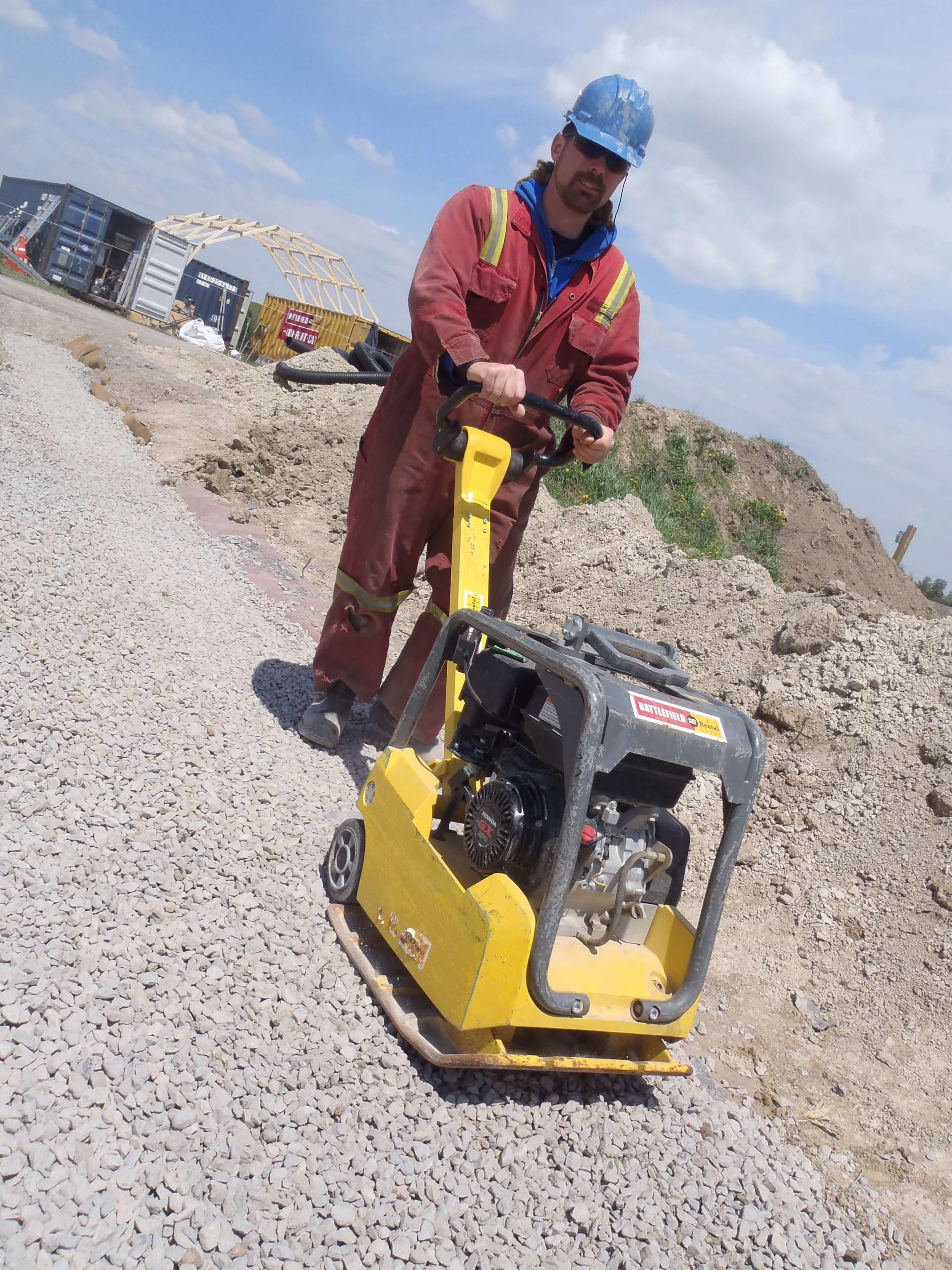Rubble trench foundations offer a means by which to connect a building to frost-free ground in cold climates without resorting to the use of a concrete wall and footing. While rubble trench foundations have a long history, they are not a common practice as most foundations in cold climates incorporate a basement space. Rubble trench foundations cannot be used to make a basement, but they are perfectly suited for buildings with grade-based floors that require a footing below frost depth.
For the Circle Organic building, our rubble trench was 4 feet deep and about 2 feet wide (the width of a backhoe bucket). We used a grade of local crushed stone called 2-4 inch clear stone. This means the fines have been washed out, leaving a rock that is very well draining.
Water that may make it into the trench drains through the stone to a drainage tile at the base of the trench. This drainage pipe slopes around the building and terminates in a “dry sump” where any water can accumulate and percolate into the ground away from the foundation.
The trench is lined with used carpet, which is free for the taking from most carpet installation companies. On the sides of the trench, the carpet prevents wet soil from migrating into the rubble trench and blocking the free-draining rocks. It also provides a small thermal break from the soil.
On the outside of the trench, we also used Roxul Drainboard, a recycled mineral fiber board that is free draining and provides a more significant thermal break. Insulating a rubble trench foundation isn’t necessary, but we are applying solar heat to the ground under the building, and wanted to keep that heat from migrating into the surrounding soil.
The stone in the trench is compacted up to grade level. We then added a layer of 3/4 inch gravel over the trench and over the entire floor area. This stone is easy to level out and compact, and provided a base for the above-grade portion of our foundation as well as the slab floor.
In areas where locally harvested crushed stone is widely available and affordable, this type of foundation makes a lot of sense. It displaces a very large amount of concrete in a very simple and straightforward way. Rubble trench foundations only work in soils where a narrow-ish trench can be dug without the sides caving in. Very sandy or very rocky soils may not be appropriate.
By connecting the building above to frost-free ground below, a rubble trench foundation can often be the lowest embodied energy and most reliable and stable foundation in a sustainable builder’s repertoire. It certainly worked for us at Circle Organics!








